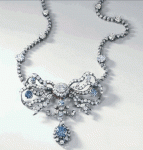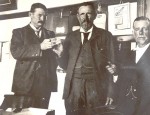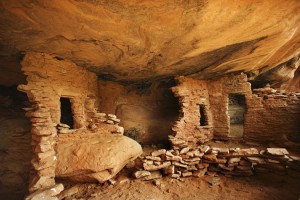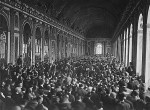 No, you have not fallen through a time warp and woken up in 1919. On Sunday, October 3rd, the 20th anniversary of German reunification, Germany will pay the last of the reparations stipulated in the Treaty of Versailles.
No, you have not fallen through a time warp and woken up in 1919. On Sunday, October 3rd, the 20th anniversary of German reunification, Germany will pay the last of the reparations stipulated in the Treaty of Versailles.
The reason it took 92 years is that there were multiple interruptions, restructurings and reduction of the debt from the initial crippling judgment. The first sum assessed in 1919 was a staggering 269 billion gold marks (around 96,000 tons of gold). John Maynard Keynes, the representative from the British Treasury to the Paris Peace Conference, actually resigned in protest. “Germany will not be able to formulate correct policy if it cannot finance itself,” he said at the time, and boy did he turn out to be right.
 Germany couldn’t keep up with the payments and in 1923 defaulted. France and Belgium responded by sending troops into the Ruhr River valley, the heartland of German industrial production. Germans passively resisted the occupying forces, stopping coal production and railway transit cold. This impasse was a major factor in the hyperinflation that followed, as seen in pictures of kids using stacks of worthless banknotes to build forts and women burning them for heat.
Germany couldn’t keep up with the payments and in 1923 defaulted. France and Belgium responded by sending troops into the Ruhr River valley, the heartland of German industrial production. Germans passively resisted the occupying forces, stopping coal production and railway transit cold. This impasse was a major factor in the hyperinflation that followed, as seen in pictures of kids using stacks of worthless banknotes to build forts and women burning them for heat.
To try to staunch the wound, the Entente powers hastily threw together the Dawes Plan which reduced Germany’s overall war debt to 132 billion gold marks, guaranteed loans from the US and got the occupying troops out of the Ruhr. Although German business rebounded, the damage had been done and the annual payments were still too enormous for Germany to make good on.
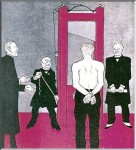 The debt was reduced again to 112 billion gold marks in the Young Plan in 1929, but then the world economy asploded so at the Lausanne Conference in 1932, the Allies to all intents and purposes suspended the payments. The year after came Hitler and he wasn’t keen on paying reparations. It wasn’t until 1953 when Germany had been divided and West Germany was occupied by Allied forces that the subject of the Versailles reparations was addressed again.
The debt was reduced again to 112 billion gold marks in the Young Plan in 1929, but then the world economy asploded so at the Lausanne Conference in 1932, the Allies to all intents and purposes suspended the payments. The year after came Hitler and he wasn’t keen on paying reparations. It wasn’t until 1953 when Germany had been divided and West Germany was occupied by Allied forces that the subject of the Versailles reparations was addressed again.
But in 1953, West Germany agreed at an international conference in London to service its international bond obligations from before World War II. In the years that followed it repaid the principal on the bonds, which had been issued to private and institutional investors in countries including the United States.
Under the terms of the London accord, Germany was allowed to wait until it unified before paying some €125 million in outstanding interest that had accrued on its foreign debt in the years 1945 to 1952. After the Berlin Wall fell and West and East Germany united in 1990, the country dutifully paid that interest off in annual installments, the last of which comes due on Oct. 3.
And here we are. If you’re very crazy and/or bored, you can read the entire text of the Versailles Treaty here.


